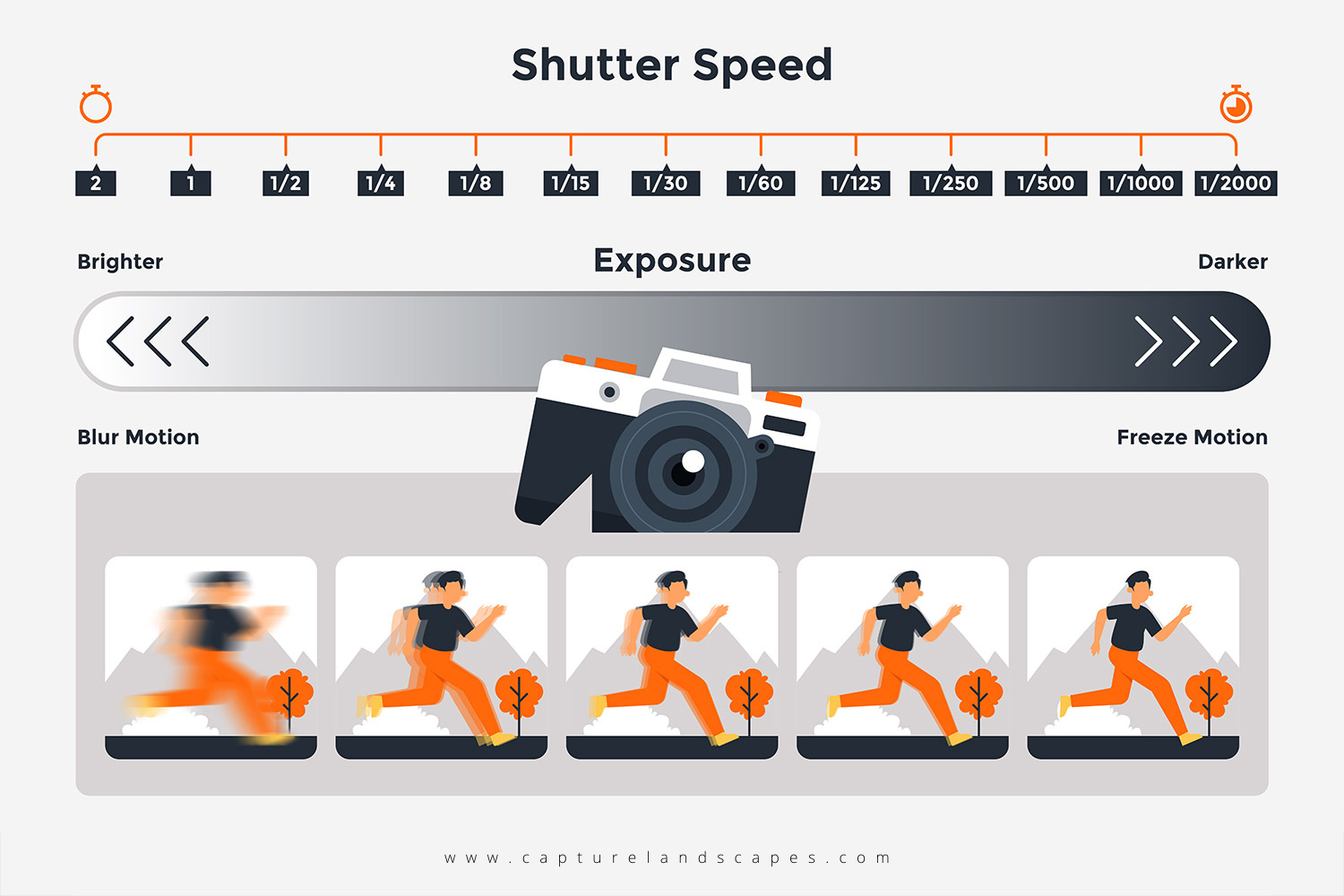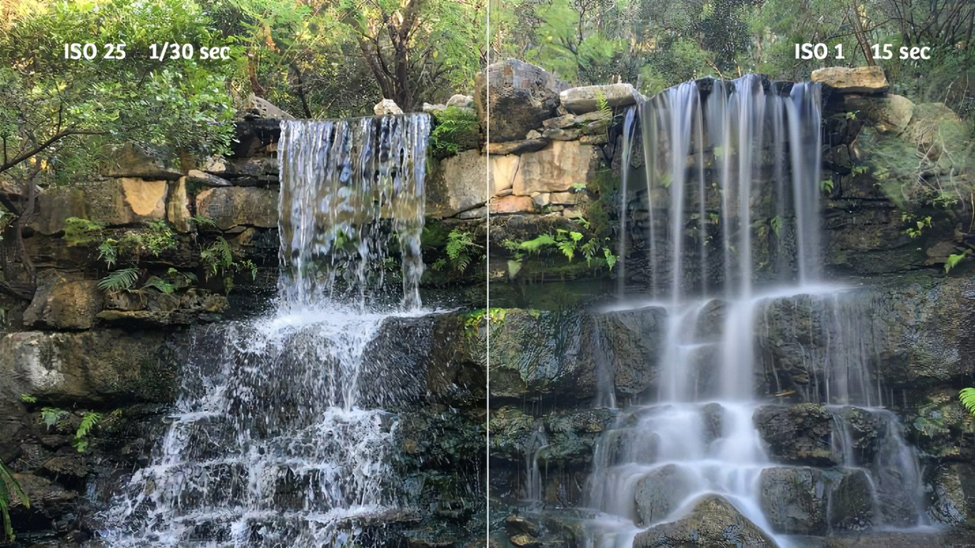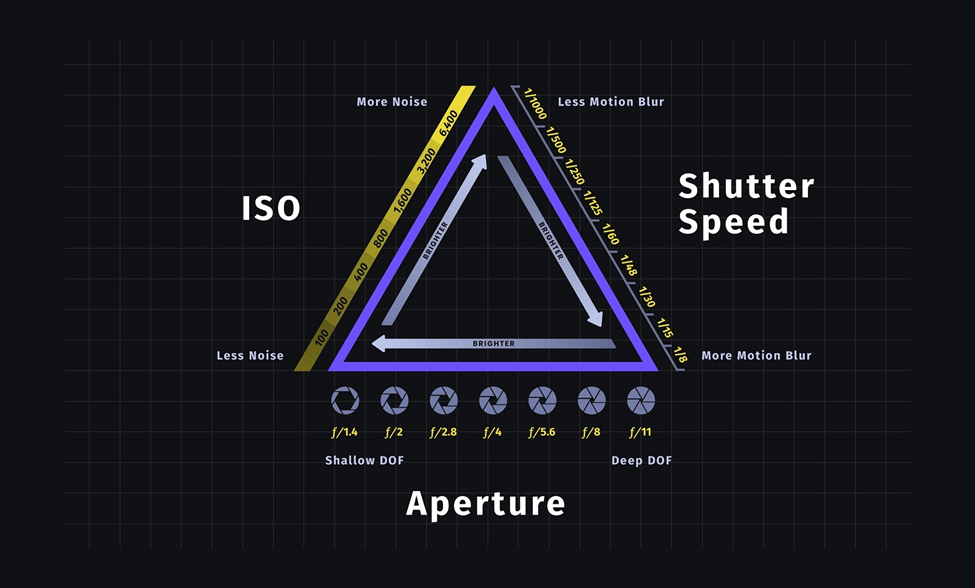The Exposure Triangle
The Exposure Triangle
Photographers and videographers must understand the relationship between three things in order to control the camera and set the exposure intentionally.
- ISO - how sensitive the light sensor will be to light
- f-stop/aperture - how much light is allowed to pass through the lens iris
- Shutter speed - how long the shutter is left open before it closes to cut off incoming light
An adjustment to any one of these settings will impact the final exposure of the image. It is up to the photographer/videographer to set all three in balance, to achieve the desired depth of field, motion blur, and exposure.
Shutter Speed
The shutter speed, aka exposure time, is the time that the image sensor is exposed to light when capturing an image. The shutter is a mechanical window inside the camera that opens and closes to allow light into the sensor for a selected amount of time.
A fast shutter speed, such as 1/1000 of a second, will allow light into the sensor extremely briefly. This will work in bright lighting conditions but may not allow enough light to impact the sensor in dimmer light.
A slower shutter speed, such as 1/250 of a second, will allow more light into the sensor, and may work better in lower light conditions. However, a lot can happen over longer periods of time, so faster moving subjects or camera movement may result in a blurry look. This could be an intentional, artistic effect, or could simply ruin your shot or take.
Extremely slow shutter speeds (for example ½ second, 1 second, or more) will allow a LOT of light into the sensor and will almost certainly result in blur effects.



